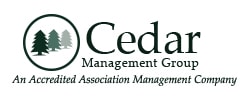Golf clubs in HOA communities have long been prevalent. These clubs and courses offer recreational opportunities to homeowners. They also enhance property values and contribute to the overall aesthetic appeal of the community. However, golf clubs have been experiencing a change in modern HOAs, and with these changes come unique challenges.
The Historical Development of Golf Clubs in HOA Communities
The integration of golf courses into HOA communities can be traced back to real estate development strategies to maximize property values. Developers found that offering recreational amenities like golf courses could significantly increase homes’ appeal and sale prices.
Traditionally, these communities follow a two-tiered model: the HOA manages the residential aspects, while a separate golf club owns, operates, and maintains the golf course. This model allows developers to earn back their initial capital investments through membership fees and dues. At the same time, they can ensure that the presence of the golf course enhances property values.
Homeowners were given the choice to “opt in” or “opt out” of club participation, creating a voluntary membership system. This arrangement worked well for a time. However, as economic conditions and recreational preferences shifted, the sustainability of these clubs came into question.
The Decline of the Traditional Country Club in HOA Communities
Over the years, the voluntary membership model has faced increasing challenges. These challenges came from economic downturns, changing demographics, and declining interest in golf. As a result, the number of homeowners willing to support the clubs also dropped. As fewer homeowners participated, clubs had to make difficult decisions. They could either raise dues to unreasonable amounts, reduce the quality of services, or sell/close the club.
These challenges have led to a new reality for many HOA communities with golf courses. The traditional two-tiered model, where the HOA and the golf club were legally distinct entities, has slowly morphed into a single-tiered structure.
In this new model, the HOA owns and operates the golf and recreational facilities. This way, all homeowners are responsible for contributing to the upkeep of these amenities. After all, club members are not the only ones who benefit from them. Homeowners, too, experience perks in the form of enhanced appeal and property values.
The Emergence of the Single-Tiered Model
The single-tiered model, or bundled or golf-benefited community, is gaining traction as a fairer and more sustainable approach. In this model, all homeowners must contribute financially to the maintenance and operation of the golf course, even if they don’t use it. This approach ensures that the entire community shares the financial burden, reducing the risk of economic instability for the golf course.
The rationale behind this model is straightforward. A well-maintained golf course enhances property values for all homeowners, not just club members. By requiring all residents to contribute, the community can ensure that the golf course remains a viable and attractive amenity. In turn, this will help preserve the value of the homes within the community.
Legal and Financial Challenges of Golf Courses in HOAs
The single-tiered model offers a solution to the financial challenges that golf clubs in HOA communities face. However, it has its own set of legal and financial complexities. One of the primary challenges is the potential for legal disputes when transitioning from a voluntary to a mandatory membership system.
In some cases, HOAs have attempted to retroactively impose mandatory membership on existing homeowners by amending the governing documents. This approach has led to lawsuits, with homeowners arguing that they never agreed to compulsory membership when they bought their property.
Courts have sometimes sided with these homeowners, ruling such amendments unenforceable. As a result, some communities have opted to apply for mandatory membership only to new homeowners, allowing existing residents to maintain their voluntary status.
Another financial challenge is balancing maintenance dues with homeowner satisfaction. Homeowners often resist any attempt to raise HOA dues to cover the costs of operating the golf course. Non-golfers, in particular, are the harshest critics of such a decision. After all, they don’t use the amenities.
Strategies for Successful HOA Golf Management
Given the challenges involved in managing a golf club within HOA communities, boards must adopt strategic approaches to ensure long-term sustainability. While closing down the golf course is an option, it can lead to a loss in property values. Overgrown fairways can also lead to higher crime rates, pest infestations, and a higher risk of fires.
The following strategies can help HOAs navigate these challenges:
1. Comprehensive Financial Planning
 HOA boards must engage in comprehensive financial planning considering the long-term costs of operating and maintaining the golf course. This includes conducting regular reserve studies to ensure the community has the funds for future repairs and replacements. By planning, HOAs can avoid sudden and large increases in dues that can lead to homeowner dissatisfaction.
HOA boards must engage in comprehensive financial planning considering the long-term costs of operating and maintaining the golf course. This includes conducting regular reserve studies to ensure the community has the funds for future repairs and replacements. By planning, HOAs can avoid sudden and large increases in dues that can lead to homeowner dissatisfaction.
2. Transparent Communication
Clear and transparent communication with homeowners is crucial for gaining support. HOAs should educate residents about the golf course’s benefits to the entire community. The board should provide regular updates on the club’s financial health, membership models, and dues. This can help build trust and reduce the chances of legal disputes.
3. Exploring Alternative Revenue Streams
HOAs can explore alternative revenue streams for the golf course to reduce homeowners’ financial burden. This could include opening the course to non-residents for a fee, hosting events or tournaments, or offering additional recreational amenities that generate income. By diversifying revenue sources, the HOA can have other forms of revenue to rely on instead of just homeowner dues.
4. Legal Consultation
Before making any significant changes, HOAs should consult legal experts to ensure compliance with state laws and the governing documents. This can help prevent costly legal disputes and ensure any changes are enforceable.
 5. Engaging the Community in Decision-Making
5. Engaging the Community in Decision-Making
Involving homeowners in the decision-making process can help foster goodwill and earn support. HOAs can hold town hall meetings, surveys, or focus groups to gather input from residents and address their concerns. These will promote trust within the community and instill a sense of shared responsibility.
The Final Word
A golf club in an HOA community presents both opportunities and challenges for HOAs. Golf clubs can significantly enhance property values and provide recreational benefits. However, boards must make smart decisions about maintenance and operations, especially if they plan to make any significant changes.
Cedar Management Group offers HOA management services to various communities, including golf and club communities. Call us today at (877) 252-3327 or contact us online to learn more!
RELATED ARTICLES:
- Is Renting Out HOA Amenities A Good Idea?
- 9 HOA Amenities You Must Have In Your HOA Community
- Is Including Landscape Items In Reserve Study A Wise Decision?






